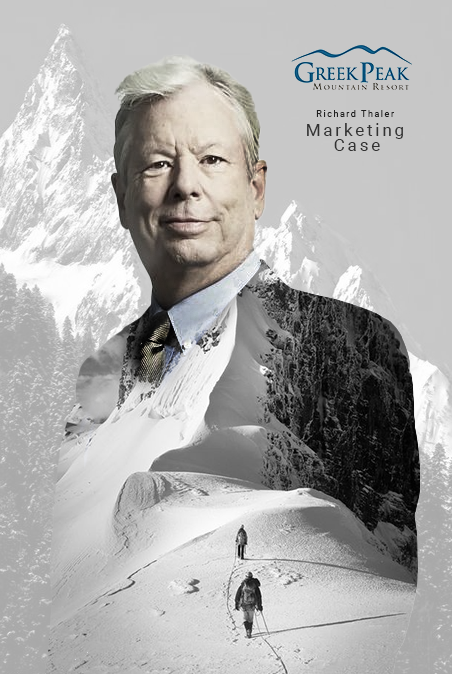The History of YouTube Creation
Where do Internet users go for short videos, movies, shows, concerts, recipes, educational videos and other video content? Of course, to YouTube. No one will argue that the face of the World Wide Web has changed dramatically over the years of the YouTube Internet platform's existence. Who created this unique creation? When and how did the YouTube Internet service, which gathers over 2 billion users in front of screens per month, originate? Briefer.pro tells the story of YouTube - from its appearance to the most popular channels of the video hosting.

YouTube History
The background of YouTube's creation
Today, the world's largest video hosting is used by over a billion people, which is almost half the number of all Internet users worldwide, and 80% of them have their own account on this service. Did the creators of YouTube know that their brainchild would hold viewers' attention for hours and eventually become the main platform for watching video content, with only Google ahead?
But few people know that the original idea of YouTube's creators was a dating site. Moreover, it had its own twist - the user could not only meet but also upload their own videos to the profile. It was thanks to this twist that YouTube's further history was predetermined.
The dating service launched on the symbolic date - Valentine's Day in 2005. This is the date of the beginning of YouTube's history: the trademark was also registered then, as well as the logo and domain. But users, instead of uploading videos about themselves for dating, began to record video content mostly about what was happening around them and share videos.
It should be noted that before the appearance of this site, there were certain inconveniences with sending video content: email was used (with its small capacity for video files), it was not possible to view videos in real time, you had to wait a long time for the video to upload, and there was no guarantee that the video would be 100% viewable (unstable connection, coding difficulties).
The creators of YouTube took into account all these shortcomings, took Flash Video technology as the basis (it allowed maintaining good recording quality and upload speed with a small amount of data) and, without knowing it themselves, created a future Internet giant. Because people needed it. Because it was on time. But who created this popular site and where was YouTube created?
How to make entertainment website
By Pop Art Studio | 02.01.2022

An entertainment website is a digital platform designed to provide engaging and enjoyable content, catering to a diverse audience. These websites can encompass various forms of entertainment, including music, movies, articles, and videos.
Who Created YouTube
YouTube creators are three young guys from the so-called PayPal mafia: Chad Hurley (was PayPal's chief designer), Jawed Karim (was PayPal's anti-fraud system developer), Steve Chen - computer engineer. After eBay bought the PayPal company, Steve and Jawed got rich and wanted to create their own project.
A little background on YouTube's creators:
- Chad Meredith Hurley. Born in 1977. A native of Reading, Pennsylvania. As a child, Chad was fond of drawing, in high school he immersed himself in the field of IT technologies. He graduated from the College of Visual Arts. Created the first PayPal logo, after which he was hired there.
- Steven Chen. Born in 1978. Born in Taiwan, where he graduated from National University, then moved to America, where he graduated from the School of Mathematics, then successfully graduated from the largest campus of the University of Illinois. After studying, he also worked at PayPal. At the time of creating YouTube, he had experience owning his own company (Chen Systems, a supercomputer manufacturing company he sold in 1996).
- Jawed Karim. Born 1979. Born in GDR, then moved with his family to FRG, and at the age of 13 - to the USA. He graduated from Central School in Minnesota, enrolled at the same University of Illinois, but did not complete his studies, got a job at PayPal. His parents are scientists. Even while in high school, the guy became the creator of an autonomous electronic messaging system.
The idea of creating a video hosting allegedly belonged to Jawed Karim. It came up after the 2004 Indian Ocean earthquake, which caused a tsunami. Jawed wanted to find video of this event on the Internet but didn't find any. Then he voiced his idea of creating a hosting for videos on any topic to his friends. It turned out that his friends were also enthusiastic about the idea of creating something similar. They failed to send a video from one of the parties to their friends, which led to the idea of creating such a service.
But the idea of creating a hosting for videos on any topic seemed too abstract to the guys, so it was decided to launch the service as a dating site, which were gaining popularity in those years. This is how YouTube's history began.
In general, there are different versions regarding the idea of creating video hosting. We will not insist on any of them. Users no longer care so much about who exactly owns the idea. In the end, the guys worked together, and we enjoy using their brainchild with pleasure.
YouTube Creation
Where YouTube Was Created and the History of the First Video
YouTube's history began in San Bruno, California, where its creators lived. The company was also registered here. Initially, the platform had a non-commercial basis. But when the number of users began to reach 9 million per day, Hurley placed the first ad. But let's go back to the launch and development of the project.
The history of videos on the YouTube platform began with the first uploaded video. At that time, its duration should not have exceeded 10 minutes. Jawed uploads the first video, recording his trip to the zoo. It was posted on April 23, 2005, and lasted only 18-20 seconds. Then other users began posting similar videos and sharing them.
The guys understand that people need the resource for far more than just dating, and change the concept. But in the summer of 2005, it was still difficult to predict the future of the service, and Jawed leaves the company to complete his graduate studies at Stanford University.
But already in the fall, the guys attract serious investors and receive $3.5 million for development. Just a year after the launch of the project, thanks to various uploaded videos, YouTube enters world history as the most popular resource.
In 2006, with the platform showing the highest growth among all sites, it receives another $8 million in investment. The service already has over 65 thousand uploaded videos, and views exceed 100 million per day.

Cooperation with Google in YouTube's History
Those who created YouTube, these young guys, in 2005 could not even imagine that by the end of next summer they would be signing contracts with various major companies. What can we say about the main deal in their life - with Google Inc. The company thought very little about buying the video hosting. Already in September 2006, it offered the platform developers $1.6 billion for their brainchild.
The young people simply could not refuse such a deal and in November signed a contract, selling the video hosting to the corporation. After the deal, the newly enriched Steve Chen leaves his company, and Chad Hurley remains CEO for four years. In 2010, he will resign.
Since the purchase, Google has improved the service, and in 2007 introduced a unique program allowing users to monetize their video content. The era of YouTube bloggers began. Channels for children have become especially popular. Many people of different ages have become rich thanks to this platform. Here are just some of them:
YouTube Stories
- Jimmy Donaldson, 23 years old - $24 million.
- Rett James McLaughlin, Charles Lincoln Neal at the age of 43 earned $10 million each.
- Mark Edward Fischbach, 32 years old - $19.5 million.
- Preston Arsement, 27 years old - $19 million.
- Anastasia Radzinskaya earned over $18 million at the age of seven.
- Stevin John, 33 years old - $17 million.
Today, YouTube is the largest video hosting site in the world. It allows you to entertain yourself, learn, advertise your business, and, of course, monetize your personal content. Many have already completely forgotten about traditional television. Its channels on the beloved YouTube have completely swept it away. Over 2 billion users are on YouTube every month and cannot take their eyes off, watching one video after another. Do you watch videos on YouTube?
 Elon Musk's radically angular Cybertruck pickup shocked audiences in 2019 with its geometric stainless steel body evoking sci-fi movies and 80s cars. Its unconventional form draws criticism along with praise for its boldly futuristic look. Behind the origami-esque styling lies a highly capable electric truck with armored doors, adaptive air suspension, and up to 500km range. But with pickup buyers traditionally loyal to brands like Ford and RAM, does the Cybertruck's divisive design represent an innovation that will disrupt and transform the market or an alienating bust?
Elon Musk's radically angular Cybertruck pickup shocked audiences in 2019 with its geometric stainless steel body evoking sci-fi movies and 80s cars. Its unconventional form draws criticism along with praise for its boldly futuristic look. Behind the origami-esque styling lies a highly capable electric truck with armored doors, adaptive air suspension, and up to 500km range. But with pickup buyers traditionally loyal to brands like Ford and RAM, does the Cybertruck's divisive design represent an innovation that will disrupt and transform the market or an alienating bust?
 Explore how neuromarketing reveals the brain's role in purchase decisions based on pleasure and suffering. Learn about the endowment effect and its intriguing parallels, as well as the diminishing marginal utility of wealth. Uncover key factors influencing buying choices and their implications for marketing.
Explore how neuromarketing reveals the brain's role in purchase decisions based on pleasure and suffering. Learn about the endowment effect and its intriguing parallels, as well as the diminishing marginal utility of wealth. Uncover key factors influencing buying choices and their implications for marketing.
 Dive into the marketing odyssey of "Greek Peak," a ski haven sculpted by the expertise of Richard Thaler, a maestro in behavioral economics. Through calculated pricing crescendos, the resort danced with gradual increments, ensuring customer harmony. Thaler's insights fueled service crescendos, with free offerings and tailored passes for locals and students.
Dive into the marketing odyssey of "Greek Peak," a ski haven sculpted by the expertise of Richard Thaler, a maestro in behavioral economics. Through calculated pricing crescendos, the resort danced with gradual increments, ensuring customer harmony. Thaler's insights fueled service crescendos, with free offerings and tailored passes for locals and students. 